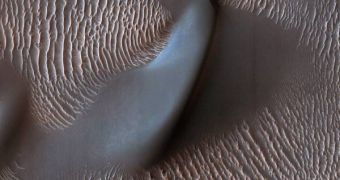No less than 100 Terabytes of imagery and data featuring the Moon and planet Mars will find its way into WorldWide Telescope as a result of a partnership between Microsoft and NASA. The content, captured by NASA’s orbiting observatories, will be integrated into the Redmond company's online virtual telescope in 2009, the duo revealed. According to the two parties involved, the 100 Terabytes of data will be processed by NASA and hosted at the agency's Ames Research Center in Moffett Field.
“This collaboration between Microsoft and NASA will enable people around the world to explore new images of the moon and Mars in a rich, interactive environment through the WorldWide Telescope,” explained Tony Hey, corporate vice president of Microsoft External Research.
WorldWide Telescope users will be able to access data gathered by NASA, including content harvested by the Mars Reconnaissance Orbiter (MRO), which was launched back in August 2005. At the same time, the software giant's online virtual telescope will allow users to explore the lunar environment through the imagery and data collected by the Lunar Reconnaissance Orbiter (LRO), which is scheduled to launch in May, 2009.
“NASA has a wealth of images and data, from the Apollo and Lunar Orbiter missions to Mars Reconnaissance Orbiter and the Mercury Messenger flybys,” added NASA Ames Chief Information Officer Chris C. Kemp. “This collaboration makes it possible for NASA to leverage exciting new Microsoft technologies to make NASA’s data — and America’s space program — more accessible to the public.”
The WorldWide Telescope was introduced in early 2008 as a way to allow users to explore space from their desktop. This month the virtual telescope evolved, and is now available not only through a downloadable client, but straight from the browser via Silverlight. “WorldWide Telescope serves as a powerful tool for computer science researchers, educators and students to explore space and experience the excitement of computer science,” Hey added.

 14 DAY TRIAL //
14 DAY TRIAL //